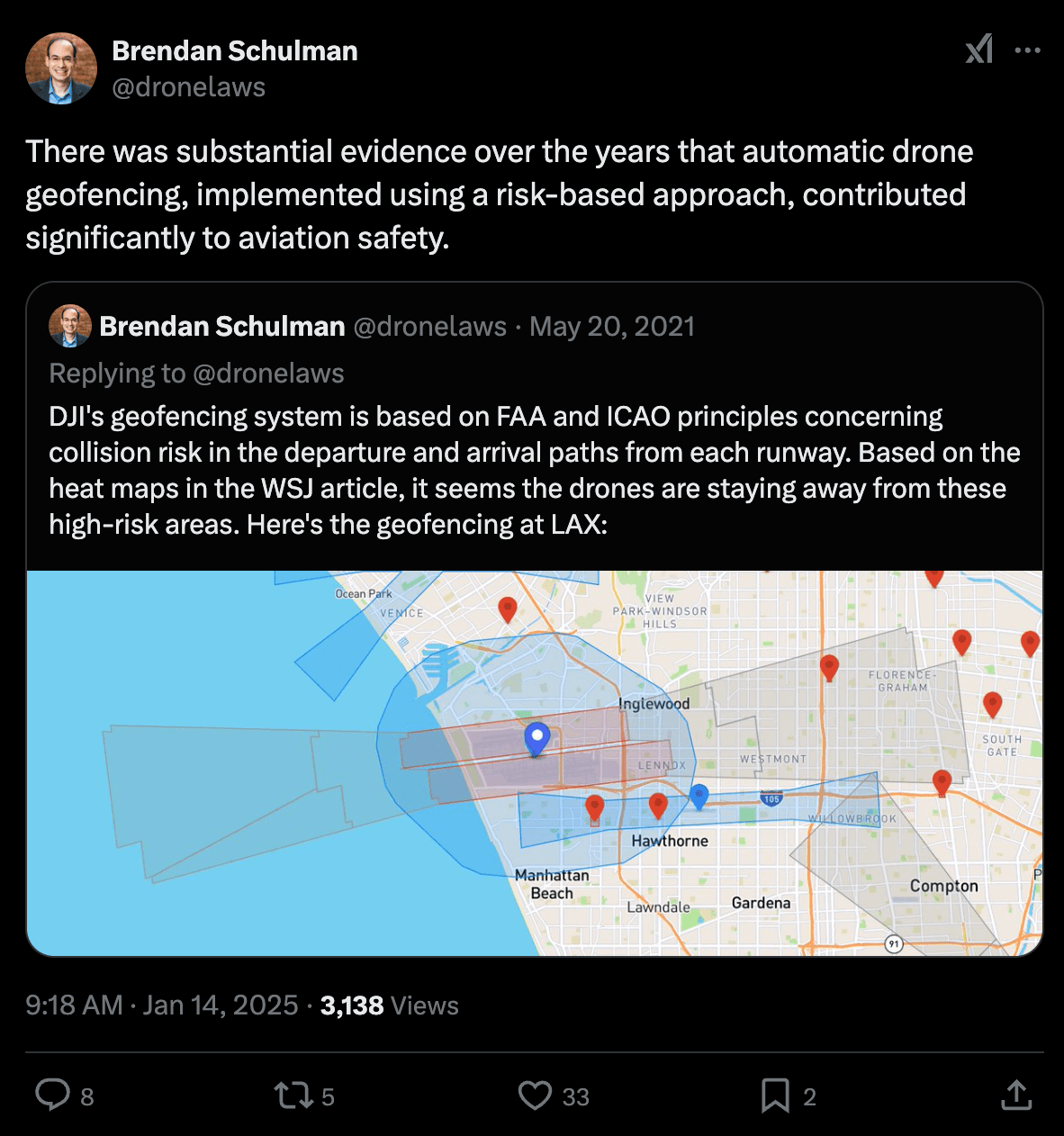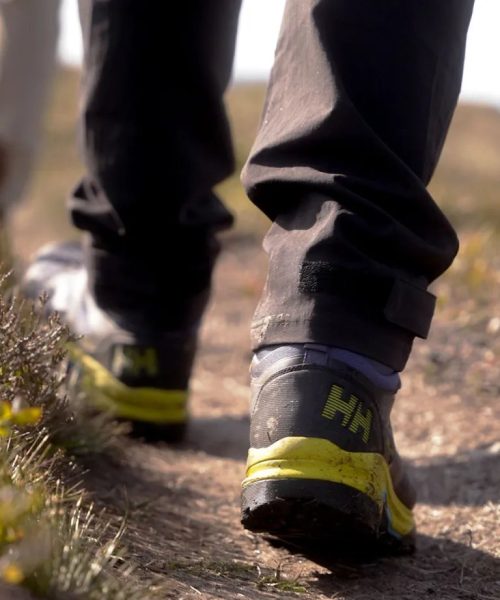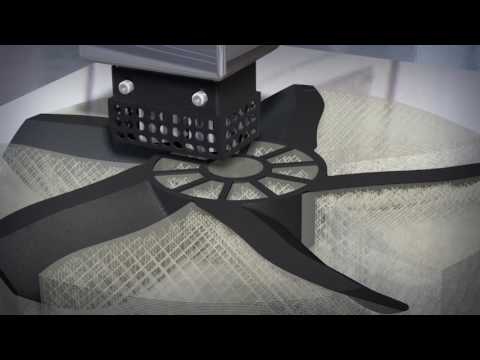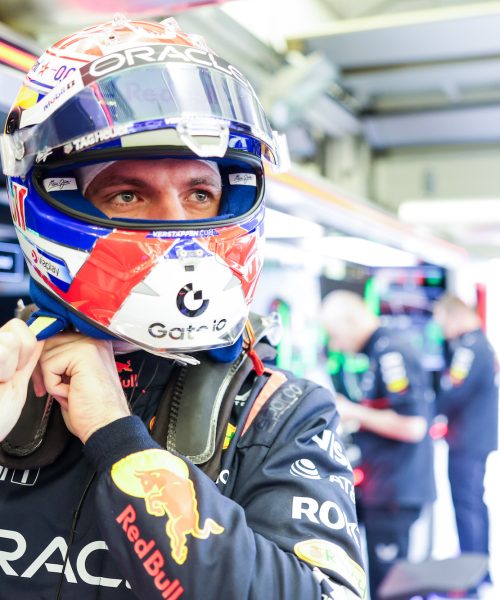This week DJI, the world’s leading drone manufacturer, announced a new policy removing enforcement of its “No Fly Zone” geofences in restricted areas. The sudden shift may lead to more drones hovering where they shouldn’t, which could worsen a lingering national panic over flying objects in the sky.
DJI, the China-based drone giant, says it will no longer enforce geofence barriers that prevent its products from flying over restricted areas like airports, wildfires, and government buildings. Though the company says these changes are intended to empower its users, they come amid a surge in drone sightings, some around critical infrastructure, that have stoked fears and fueled a growing tide of conspiracy theories. DJI’s changes mean operators will have one less guardrail preventing them from flying into risky areas. The drone dama might not be going away anytime soon.
DJI won’t stop drones from flying over hospitals and wildfires
DJI caused a brief panic in 2015 after a drone operator crash-landed one of its Phantom FC40 on the White House lawn. Backlash to that event led DJI to implement geofenced “No Fly Zones” around hospitals, government buildings, and other critical zones. As part of those changes, DJI prohibited its drones from taking off in restricted zones. Drones that flew near the boundary of those areas would be forced to automatically decelerate and then hover in place. The voluntary restrictions were an effort by DJI to prevent its users from accidentally flying into sensitive areas where they could potentially interfere with critical services.
[ Related: Civilian drone grounds LA firefighting plane ]
That’s changing. In a blog post published this week, DJI said it was doing away with geofenced No Fly Zones and replacing them with “enhanced warning zones,” maintained by the Federal Aviation Administration. Drone operators using DJI Fly and Pilot apps will now receive an in-app alert notifying them if they are approaching an FAA-designated controlled airspace. Operators can choose to ignore those alerts. Crucially, it will now be left in the hands of the operators to decide whether or not they will avoid the area.
DJI says it’s removing the geofences to place more control back in the hands of its operators and put its policies in line with regulatory principles “of the operator bearing final responsibility.” The company claims it implemented No Fly Zones “help foster responsible flight practices” during a period where drones were less common and regulatory environments surrounding their use were still being flushed out. Now, according to DJI, regulations both in the US and the EU have made the boundaries considered controlled airspace more clear. DJI did not immediately respond to our request for comment but defended the change in statements sent to The Verge on Tuesday.
“This GEO update aligns with the principle advanced by aviation regulators around the globe—including the FAA—that the operator is responsible for complying with rules,” DJI told The Verge.
In a statement sent to Popular Science, the FAA said the agency does not require geofencing from drone manufacturers. Individual drone operators are required to obtain proper airspace authorization and comply with regulations.
“Generally speaking, it is legal to fly a drone in most locations if you’re operating under 400 feet, but there are rules—including passing pilot safety tests, keeping the drone in sight, avoiding all other aircraft, not causing a hazard to any people or property, and avoiding restricted airspace,” the FAA said.
Geofence removals could further stoke drone panic
By giving users the final call on where drones can ultimately operate, DJI is potentially absolving itself of blame or responsibility if one of its products ends up somewhere it’s not supposed to be. But it also might increase the odds of that very scenario taking place with more frequency. In December, the Department of Homeland Security, FBI, FAA, and the Department of Defense issued a joint statement saying they had received over 5,000 alleged drone sightings in a matter of weeks. Those sightings were part of a broader phenomenon, fueled by social media, where Americans claimed to be seeing objects in the sky everywhere they looked. Some narratives suggested these odd flying objects were actually advanced military aircraft or possibly even signs of extraterrestrial life.
In reality, many of these supposed sightings may have actually been commercial planes, satellites, and planets misidentified as UAPs. But there were also undoubtedly consumer hobbyist drones flooding the skies, some of which appear to have crossed into restricted airspace. Citing these cases, the FAA on December 20 said it was temporarily restricting drones from flying overhead 51 utility sites spread out across New Jersey and New York. The FAA says it put the restrictions in place because the rising number of drones in the sky seemed to be leading some people to try and damage them with pointing lasers. Those same lasers could pose a threat to pilots operating aircraft.
DJI’s decision to remove its mandatory geofence has drawn criticism from the company’s own former leadership. In a statement posted on X this week, former DJI head of Global Policy Brendan Schulman warned the changes could have an “enormous impact,” particularly among drone pilots with less knowledge of airspace restrictions.
“There was substantial evidence over the years that automatic drone geofencing, implemented using a risk-based approach, contributed significantly to aviation safety,” Schulman said.

DJI’s policy change comes less than one week after one of its drones reportedly collided with a firefighting “super scooper” aircraft that was deployed to combat raging fires in Los Angeles. The impact forced the pilot to ground the plane as fires raged on. Officials from the FBI, which is currently investigating the collision, told CBS News the drone appeared to have violated temporary FAA flight restrictions. That’s not the only time something like this has happened either. Last year, first responders rushing to aid hurricane survivors saw an uptick in civilian drones operating in restricted airspace. Some of those drones operating in unauthorized areas reportedly contributed to an uptick in mid-air close-call events.
DJI caught in US government crosshairs
Any increase in DJI drones found operating in unauthorized airspace could further erode its view among US regulators and lawmakers, some of which believe the company’s products could be used as foreign espionage tools. Import restrictions put in place by the Department of Homeland Security reportedly already prevented DJI from selling its most recent Air 3S model in the US. Just this month, US Commerce Secretary Gina Raimondo said the agency was considering new rules that would restrict the sale of Chinese-made drones in the US. That decision will ultimately lie in the hands of incoming president Donald Trump, who has previously voiced concern over supposed security risks tied to drones imported from China and Russia.
DJI, the world’s leading drone maker, is caught directly in the US government’s spotlight and these geofence changes may only sharpen that unwanted attention.






